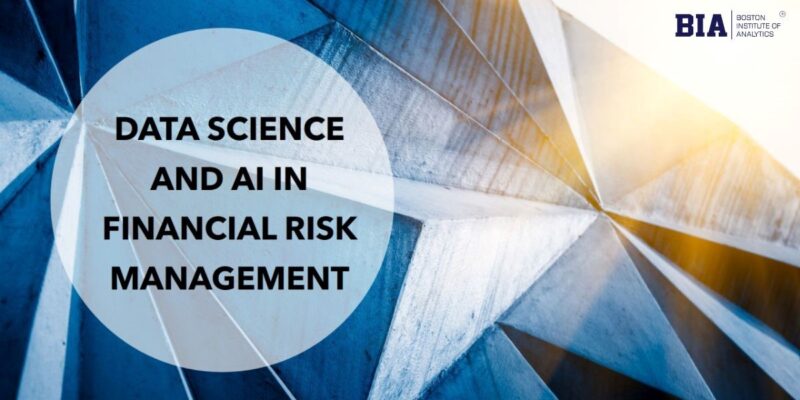The finance industry is no longer dependent entirely on intuition or experience. This is the “Moneyball” period for finance – a paradigm shifts of using data science as a primary driver of competitive advantage and operational stability. From Wall Street traders to regional credit unions, data is changing and improving the movement of capital, risk assessment, and value creation.
The amount and speed of information available today – transactional records, market feeds, macroeconomic indicators, satellite imagery, and social media sentiment – is a “Big Data” experience that you cannot navigate without advanced tools. This is where the modern data scientist comes in, transforming data from a large ocean of noise into predictive power through cleaning, transforming, and modelling the data delivering on both financial innovation and sound risk management. Data science is transforming how the financial world operates from predicting market trends to managing risks with precision. Enrolling in a data science course can help you gain the skills driving this revolution in finance.
Data Science: The Engine of Financial Innovation
Financial organizations are in a competition to embrace machine learning and artificial intelligence to provide better, faster, and more personalized offers to consumers.
Algorithmic Trading and Speed
One area and perhaps the most visible application is around algorithmic trading. High frequency trading models built and run by data scientists leverage complex machine learning algorithms to trade in milliseconds, taking advantage of small inefficiencies in the market. These models do not only do things faster; they do things smarter as well, analyzing historical data, order book dynamics, and news headlines in real time to predict price movements. The speed and precision of these models have transformed liquidity and efficiency in the markets.
The Rise of Personalized Banking and FinTech
Innovation in banks’ interactions with their customers is perhaps the most enlightening use of data science. Data allows financial institutions to design and distribute beyond a one-size-fits-all product model. By examining transactions history, demographics, digital behaviour patterns, non-linear algorithms can hyper-segment customer bases to allow for hyper-personalized loans, credit limits, and investment products. Hyper personalization is really the secret sauce behind FinTech disruptors and is what drives legacy banks to innovate.
Automated Advisory (Robo-Advisors)
Robo-advisors are a clear example of the role of data science in democratizing finance. They employ optimization algorithms and risk-profiling surveys to automate the management of investment portfolios at a fraction of the cost of human advisors. They bring sophisticated portfolio management to the masses, making it easier for new investors to access it, and they show the power of using automation and data science in financial decision making. While building and operating these novel systems requires a good understanding of statistical modelling and machine learning, those skills can be learned through a dedicated Data Scientist Course.
Data Science for Robust Risk Management
Innovation is about growth, but stability is about being able to manage risk. With the stakes in finance being so high relative to the cost of making guesses and to preserve systemic stability, the ability to apply data science in ways that protect assets, and preserve financial stability, is critical.
Next-Generation Credit Risk Modeling
Historically, lending decisions have relied too heavily on a handful of simple metrics such as the FICO score. Today, data scientist teams are building dynamic credit risk models that ingest thousands of data points, from utility payment history to cash flow patterns, allowing for much more fine-grained and precise default risk predictions. More accurately predicting default risk enables banks to mitigate losses while extending credit responsibly to underserved markets who were previously or incorrectly scored.
Real-Time Fraud Detection
As our world continues getting more digital, financial crime will always be a risk. The banking sector has employed data science for years in the form of mitigated loss to fraud risk through modern real-time detection. Similar to the previous example, these models involve unsupervised learning method that uses anomalous event to create a baseline for “normal” transaction behaviour for each customer. The models will immediately flag the purchasing behaviour as an anomaly should the transaction fall significantly outside the parameters established of prior “normal” behaviours (ex., significant high purchase on a whim at an out of town location). The institution would logically freeze the customer’s account and avoid losing the customers funds in most scenarios where a traditional card is used. As mentioned, this is a standard feature of any financial institution, as their business model is predicated on vigilant constancy and learning.
Market Risk and Stress Testing
For investment banks or the large financial institutions, measuring the expected loss due to extreme circumstances is another very important task. The data scientists at these institutions also have advanced tasks, like mitigation risk through statistical forecasting (wake or randomization method). They would apply some level of economic shock through various simulation methods to stress the portfolio (ex., a major recession, or an overnight economic shock). The predictive nature of this task serves as a proxy for capital adequacy regarding regulatory compliance. These comprehensive anti-fraud measures require the rigor of mathematics or simulation experts, to allow for stress testing the banks’ exposures to fraud or significant losses. A good Data Science Course with some more advanced level understanding of statistics, and preferably python or R programming or coding, would assist in meeting these demands as the industry’s environment will require these skills explicitly in the near future.
Regulatory Compliance (RegTech)
The financial space has an expansive and malleable set of regulations. RegTech (Regulatory Technology) attempts to streamline regulatory compliance by leveraging data science. With the use of machine learning algorithms, RegTech can automatically scan communications to flag insider trading, analyze large amounts of data to look for market manipulation, and automatically generate regulatory reports thereby saving institutions billions of dollars in compliance and oversight costs and improving the mitigation for human error.
The Essential Career Path: Becoming a Financial Data Scientist
The need for professionals who can connect advanced analytics with complex finance problems is soaring. It takes a combination of quantitative abilities (such as statistics and machine learning), technical expertise (Python or SQL), and significant finance domain knowledge in order to have a successful career as a finance data scientist. This combination of skills is best acquired through formalized education.
A robust Data Science Course or a targeted Data Scientist Course provides the background knowledge and practical projects necessary to enter a lucrative space. These courses provide learners with useful capacity to deal with the distinct properties of financial time-series data, build solid risk models, and design the next generation of financial products.
Final Thoughts – Highlight Keywords
Data science is not simply an add-on; it is the essential operating system of modern finance. It is both the best conduit for financial innovation, allowing for personalization and automation in finance, and the most capable armour for protecting against risk with unrivalled precision in understanding credit, fraud, and market exposure risk. If you are a professional wanting to be on the leading edge of this transformation, now is the time to start investing in yourself.
Enrolling in a Data Science course or Data Scientist course is without a doubt the first step towards developing the skills needed, as the most valuable, to actively create the future of finance, with data. The financial industry’s journey is now inextricably aligned with data’s journey.




Comments